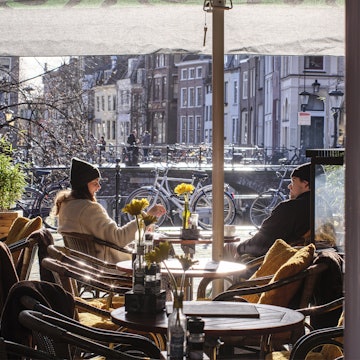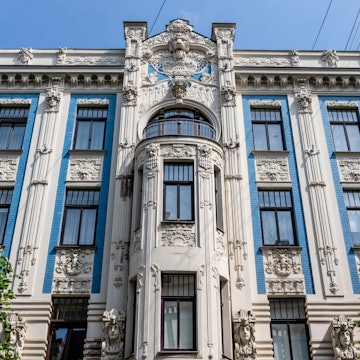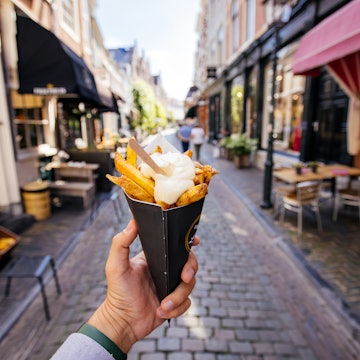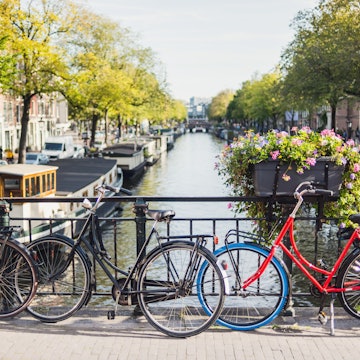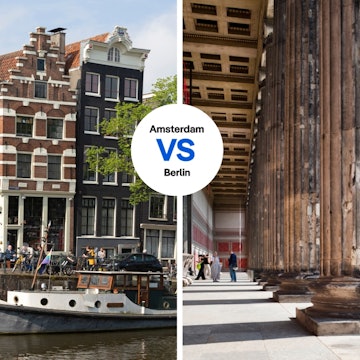

Amsterdam in spring. iStockphoto/Getty Images
Amsterdam is a European city with a delightful, vibrant vibe. You'll find cannabis-clouded coffee shops, lovely parks and cycling lanes aplenty, and understanding the city, local culture and Dutch customs will help make your trip even better.
So, what do you need to know before visiting Amsterdam for the first time? Here are our top tips for newcomers.
1. Know that Amsterdam is not a 24/7 city
Amsterdam establishments keep very regular hours. Opening hours in shops are generally from about 10am to 6pm, and 8pm for supermarkets. Many shops and grocers do not open on Sundays (with the exception of busy tourist areas like Nieuwendijk and Kalverstraat). Coffee shops tend to open in the morning and close around midnight, while bars and clubs go much later until 3 or 4am.

2. Pre-purchase tickets where possible
At museums and galleries, it’s best to plan for long lines – especially during the high season from June to August. Ticketed time slots (most can be downloaded to your phone) are available at popular sights like the Anne Frank Huis and Van Gogh Museum and should be booked at least six weeks in advance.
3. Book accommodation and restaurants in advance
Similarly, lodging should be secured at least four months before your trip, especially if you’re visiting during the summer or on the weekend. Seats at your must-visit restaurants are best squared away at least two weeks in advance.
4. Budget for a (higher) tourist tax
In 2024, Amsterdam's tourist tax – which is added to the cost of accommodation per night – has risen from 7% to 12.5%, making it now the most expensive in Europe. The tax is charged at a percentage of your accommodation cost and is payable on arrival. Plan ahead and factor the tax into your budget, as it's easy to forget about it once you've booked transport and accommodation.

5. Lock your bike…twice
Cycling is one of the most popular ways to get around Amsterdam. Most rental bikes come with two locks – it’s best to use them both! Bike thieves in Amsterdam can be very capable. Use one lock for the front wheel (attached to the bike frame) and the other for the back, preferably attached to a post, bike rack or some other structure mounted to the ground.
Also, pay attention to signage regarding bike parking. Bicycle racks near tram and train stations and in certain public squares are usually best, or you may risk the bike being removed by police.
6. Pack layers of clothing
Practical clothing will get you far in Amsterdam. It’s a city where people dress hip but casual (jeans and nice sneakers or boots, for example) and mix-and-match layers since the year-round weather is unpredictable. A light trench coat or windbreaker jacket is essential for all seasons besides winter, when a proper coat and warm gear are needed.
7. Buy an OV-chipkaart for travel around the city
The OV-chipkaart is highly recommended for public transport since it’s more convenient than single tickets and is easily reloadable at machines or online. It's available for purchase from ticketing machines and supermarkets. Note: you need to touch on and touch off, including when you're getting off trams. Otherwise, you'll pay a hefty fee.
8. Carry a mix of cash and cards
In Amsterdam, there is a growing movement of cafés and restaurants going cashless – while some of the more traditional, older haunts like bruin cafés (brown cafés) may not take cards at all. It's best to carry a mix of cash and cards.

9. Be respectful on the streets
Dutch locals are tired of Amsterdam’s reputation as a destination for bachelor parties and bad behavior, so authorities have taken steps to curtail the effects of rowdy visitors. To avoid disapproving looks and humiliating conversations, acting sensibly on downtown streets is a must.
Smoking marijuana and drinking in public is illegal and considered poor etiquette by Amsterdam natives. Similarly, taking photos of sex workers in the Red Light District is strictly prohibited.
10. Haggle at flea markets
When shopping at Amsterdam’s famous rommelmarkt (flea markets) like IJ Hallen, the first price given by the seller is usually not a firm price but a starting point. This rule applies to secondhand items not artisan-made goods. Use your judgment and always be respectful.

11. Mind the Dutch mentality
The Dutch are known for being extremely direct. If a local shares a blunt, unvarnished opinion with you, it comes from a place of honesty rather than rudeness. In Dutch culture, it’s gracious to speak your mind and keep it short – don’t be surprised to find "no" is a complete sentence!
Despite the brutally honest Dutch mentality, there are certain talking points that are considered too close for comfort and should be avoided – for example, asking personal questions about income.
12. Tip sometimes
Tipping is not expected in Amsterdam where hospitality workers receive a fair wage for their professions and are not dependent on tip jar contributions as might be the case elsewhere. Of course a tip for excellent service is not going to be considered odd (around 10% is normal). Feel free to tip in bars, cafés, restaurants and accommodation if the service warrants it. If you take a free walking tour, presenting your guide with a decent tip at the end is normal.
13. Make friends by wearing orange
At sporting events in recent years, the Dutch are known for the oranjekoorts (orange fever) or oranjegekte (orange craze).
If you want the Dutch to know you’re cheering for them, wear the royal family’s traditional color. The more outlandish and over-the-top – we’re talking wigs, feather boas and face paint – the better.

14. Pay attention to plant transport rules
Tulip bulbs purchased at Amsterdam’s Bloemenmarkt can be shipped back to countries such as the United States, but an official certificate is needed for customs. Look for the sticker that says, “To the Plant Protection Service of the United States and Canada.” The additional certificate must be dated within six weeks of travel (otherwise, it’s best to have the seller ship them).
15. Bring some cheese home with you
Most varieties of Dutch cheeses will make it through customs, although typically unpasteurized and raw cheeses may not. Cheese should also be vacuum-bagged (for the sake of your fellow travelers as well as for healthy and safety).

16. Mind the cyclists – and the cycling lanes
Cyclists in Amsterdam mean serious business. Never walk in a cycling lane, or you'll risk the wrath of an angry local on wheels. Always take a good look both ways before crossing – bicycles are silent, but an accident can be very serious for cyclists and pedestrians.
17. Don’t rent a car – rent a bike instead
Driving in Amsterdam is notoriously difficult, especially in the city center. Narrow cobblestone alleys and canals make maneuvering tough, plus parking is scarce and pricey (and it's usually not available, even at hotels).
Helmets are not legally mandated but strongly recommended. Most bike shops rent them for as little as €2.50 (US$2.80) a day.

18. Be careful around canals
Almost none have barriers, and yes, tourist drownings have happened.
19. Watch out for pickpockets
Amsterdam’s compact downtown (chock-full of foot traffic and often folks who are under the influence) is the perfect recipe for thieves – especially in busy squares and typical visitor areas. Stay aware, and don't keep all your documents and valuables on you.
20. Plan ahead in case you need medical care
Amsterdam has an abundance of English-speaking doctors and medical care services targeted toward travelers, such as Touristdoc and Amsterdam Tourist Doctors. For urgent medical care, dial 112 for emergencies or +31 20 570 9500 directly for an ambulance.








